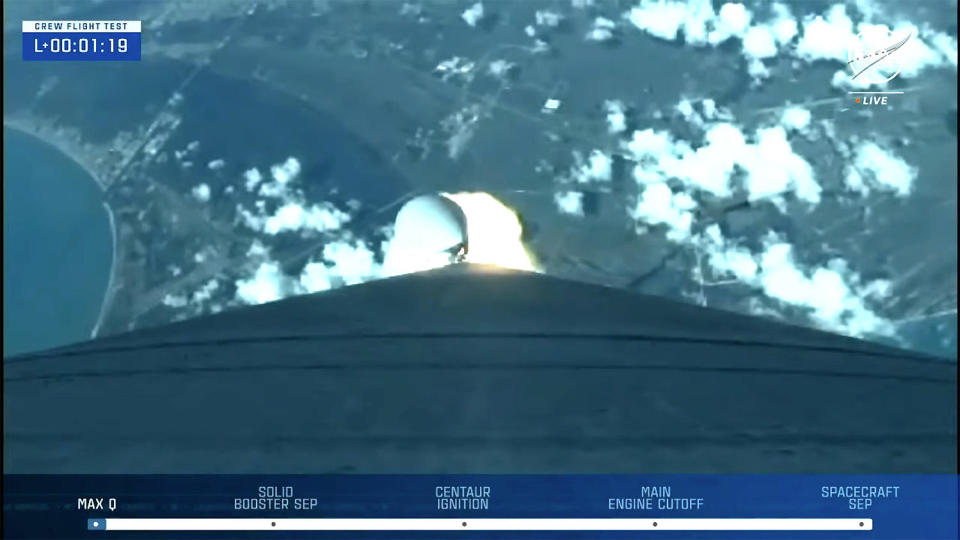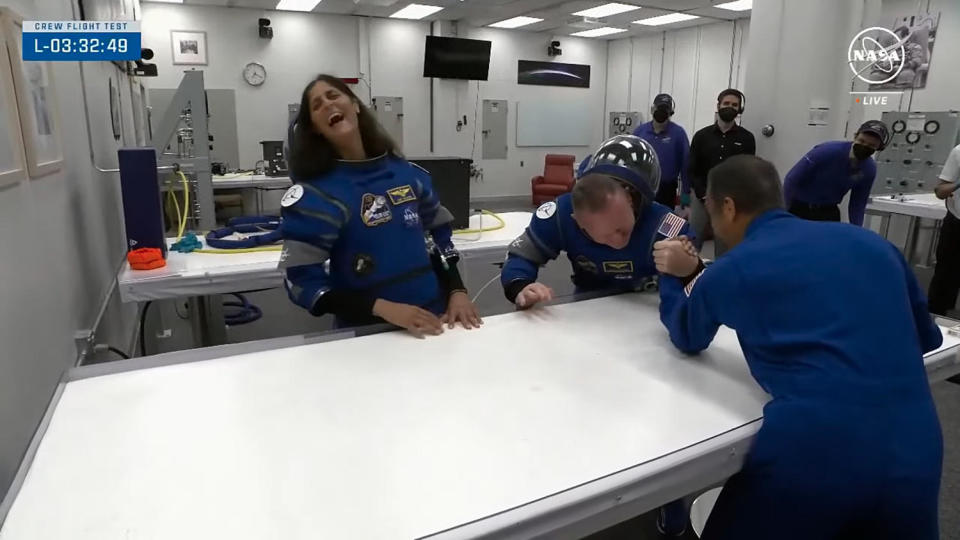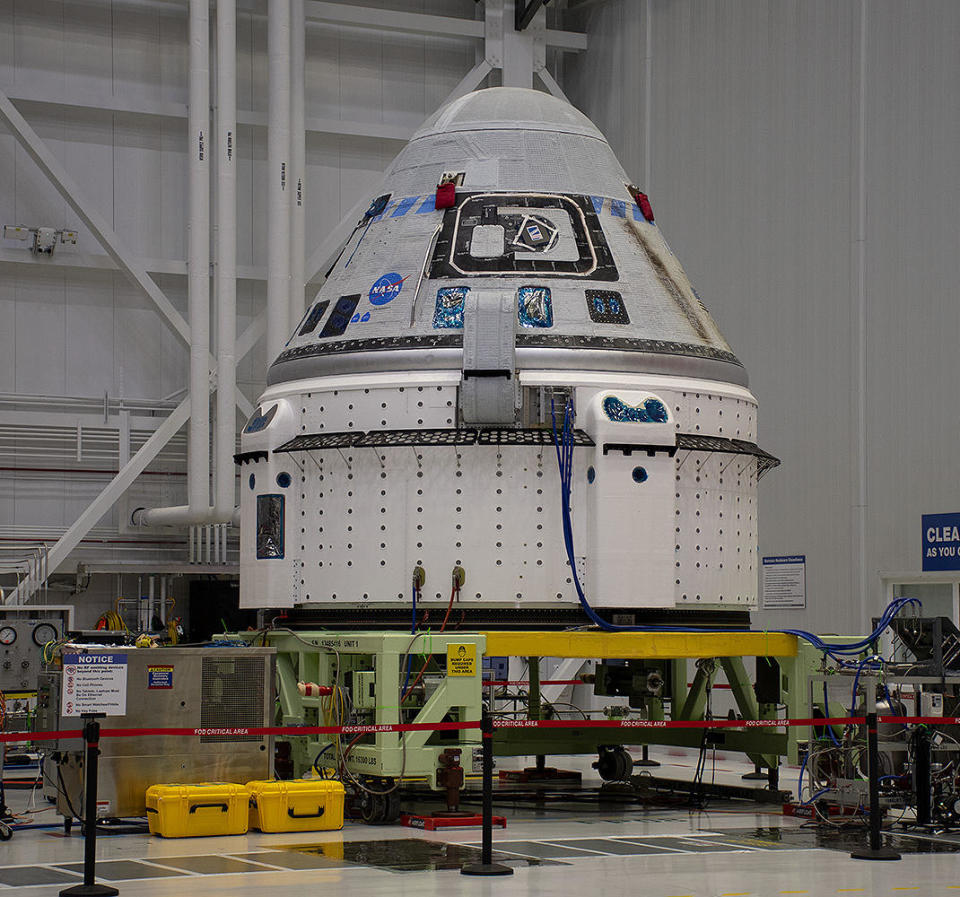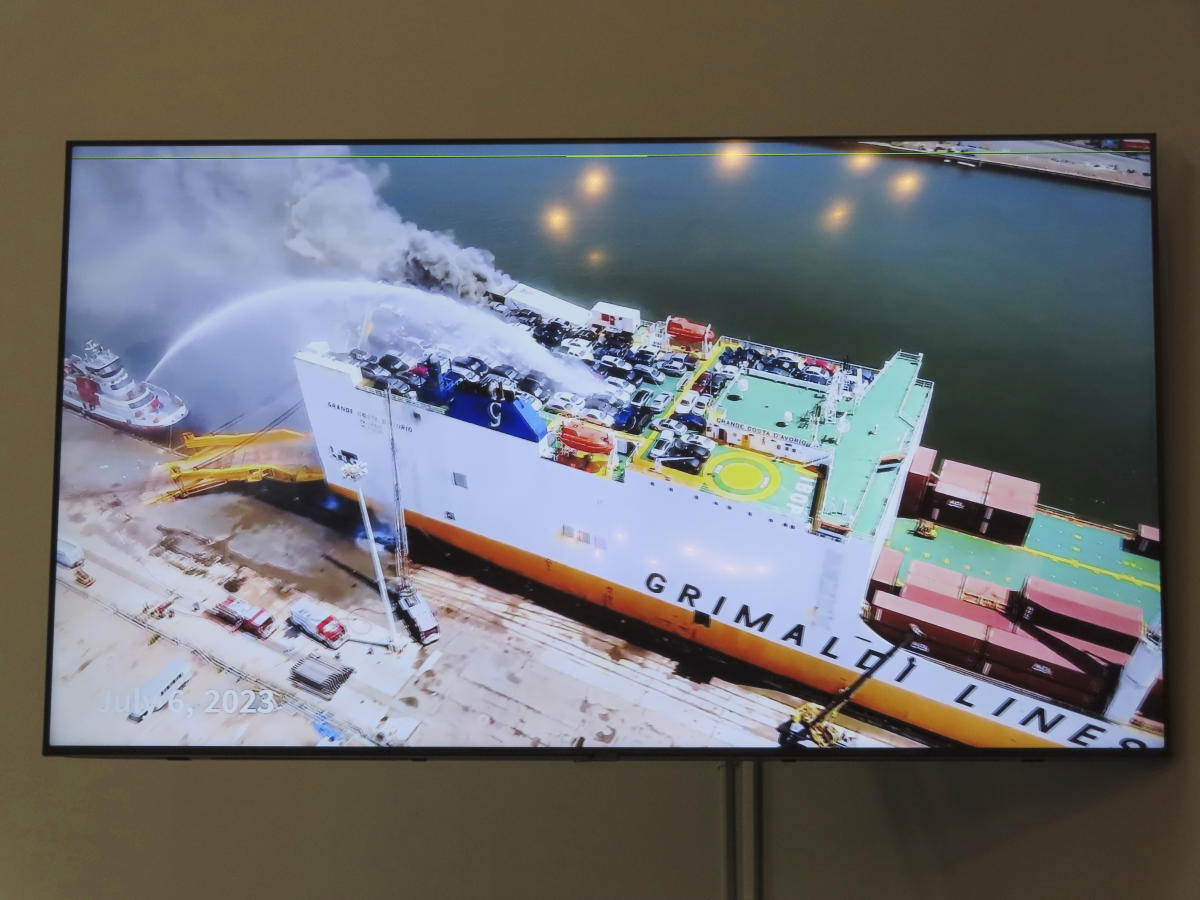A United Launch Alliance Atlas 5 rocket carrying astronauts for the first time in six decades finally blasted off Wednesday and safely boosted Boeing‘s long-delayed Starliner crew ferry ship into space for its first piloted flight, a trailblazing cruise to the International Space Station.
The workhorse Atlas 5’s Russian-built RD-180 first stage engine roared to life at 10:52 p.m. EDT, followed an instant later by ignition of two strap-on solid fuel boosters.
Generating a combined 1.6 million pounds of thrust, the 197-foot Atlas 5 majestically climbed skyward from pad 41 at the Cape Canaveral Space Force Station, arcing away to the northeast on a trajectory matching the orbital path of the space station — a requirement for rendezvous missions.
Monitoring the automated ascent were commander Barry “Butch” Wilmore and co-pilot Sunita Williams, both veteran Navy test pilots and active-duty NASA astronauts with four earlier spaceflights to their credit, 11 spacewalks between them and a combined 500 days in orbit.
“We all know that when the going gets tough, and it often does, the tough get going,” Wilmore radioed controllers from the Starliner’s cockpit before launch. “And you have. And Suni and I are honored to share this dream of spaceflight with each and every one of you. So with that, let’s get going! Let’s put some fire in this rocket and push it toward the heavens!”
He got his wish.
The Atlas 5 dropped the Starliner off with a velocity just shy of what’s required to reach orbit, a precaution to make sure the crew ship would re-enter and land safely even if a major problem knocked out its own propulsion system. But there were no problems, and a thruster firing 31 minutes after liftoff completed the ascent phase of the mission, putting the ship in the planned orbit.
The astronauts planned to test the Starliner’s manual controls and then closely monitor an automated 25-hour rendezvous with the station, catching up from behind and below before moving in for docking at the lab’s forward port just past noon Thursday.

The long-awaited flight marked the first launch of an Atlas 5 with astronauts aboard and the first for the Atlas family of rockets since astronaut Gordon Cooper took off just a few miles away on the Mercury program’s final flight 61 years ago.
It also marks the first piloted flight of the Starliner, Boeing’s answer to SpaceX’s Crew Dragon, an already operational, less expensive spacecraft that has carried 50 astronauts, cosmonauts and civilians into orbit in 13 flights, 12 of them to the space station, since an initial piloted test flight in May 2020.
Despite a larger NASA contract, Boeing’s Starliner is four years behind SpaceX getting astronauts to space. But Wilmore and Williams say the spacecraft is now safer and more capable thanks to numerous upgrades and fixes.
“I’m not going to say it’s been easy. It’s a little bit of (an) emotional roller coaster,” Williams said before the crew’s first launch attempt. But, she added, “we knew we would get here eventually. It’s a solid spacecraft. I don’t think I would really want to be in any other place right now.”

While Wilmore and Williams are closing in on the space station Thursday, SpaceX plans to launch its gargantuan Super Heavy-Starship rocket on its fourth test flight from the company’s Boca Chica, Texas, “Starbase” facility.
The booster will attempt a controlled splashdown in the Gulf of Mexico shortly after liftoff while the Starship upper stage continues into space, looping halfway around the planet before re-entry and splashdown in the Indian Ocean.
In three previous flights, both stages were destroyed in flight, but performance dramatically improved with each launch as upgrades and fixes were implemented, and SpaceX expects more of the same with the fourth test flight.
The Super Heavy has nothing to do with Boeing’s Starliner or the space station, but NASA will be paying close attention because the agency plans to use a variant of the Starship to carry astronauts down to the moon’s surface in its Artemis program. Perfecting the Super Heavy booster and Starship upper stage are crucial to those plans.
Wilmore and Williams plan to dock at the space station and be welcomed aboard by cosmonauts Oleg Kononenko, Nikolai Chub and Alexander Grebenkin, along with NASA’s Matthew Dominick, Michael Barratt, Jeanette Epps and Tracy Dyson.
Kononenko logged his 1,000th day in space across five flights Tuesday, underscoring his title as the world’s most experienced spaceman, 220 days beyond the previous mark of 879 days set by cosmonaut Gennady Padalka in 2015.
The Starliner is tentatively scheduled to undock and return to Earth on June 14, but the flight could be extended depending on the weather at desert landing sites in the western United States.
If the Starliner test flight goes well, NASA managers plan to certify the spacecraft for routine crew rotation flights, launching one Crew Dragon and one Starliner each year to deliver long-duration crew members to the station for six-month tours of duty.

NASA funded development of Crew Dragon and Boeing’s Starliner to end the agency’s sole post-shuttle reliance on Russian Soyuz for flights to the space station. Two spacecraft from different vendors were ordered to ensure the agency would be able to launch crews to the outpost even if one company’s ferry ship was grounded for any reason.
Boeing initially planned to launch the Starliner on its first piloted flight in 2020, but the spacecraft encountered multiple problems during an initial unpiloted launch in December 2019. The company fixed those issues and opted to launch a second uncrewed flight at its own expense but then ran into problems with corroded propulsion system valves.
A second, successful uncrewed test flight was finally launched in May 2022. But after the spacecraft returned to Earth, engineers discovered protective tape wrapped around electrical lines inside the ship could pose a fire risk. Then they found possible problems with parachute harness connectors. When all was said and done, the first piloted flight was pushed into 2023.
Wilmore and Williams first strapped in for launch on May 6 only to be grounded by trouble with a pressure-relief valve in the Atlas 5’s Centaur upper stage.
A more vexing problem then cropped up: a small-but-persistent helium leak in the Starliner’s propulsion system that affected one of 24 low-power maneuvering thrusters in the capsule’s service module. Mission managers ultimately decided to launch the spacecraft as is, concluding the leak did not pose any credible safety risk.
Launch was rescheduled for June 1, but crew’s second countdown stopped at the T-minus three-minute and 50-second mark when one of ULA’s ground launch sequencer computers, one of three networked systems controlling the final moments of the countdown, failed to run in synch with its counterparts.
The problem was traced to a faulty power supply. Work to install and test replacement hardware delayed the Starliner’s third launch attempt to Wednesday.
Sneak peek: Who Wanted Nicki Lenway Dead?
“Creepy crawly” giant flying Joro spiders are spreading to the Northeast U.S., experts say
Signup bonus from





